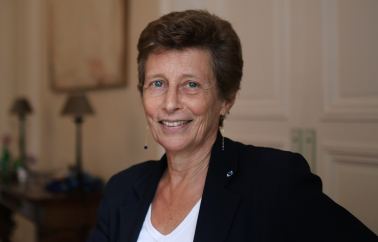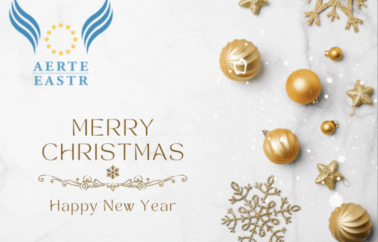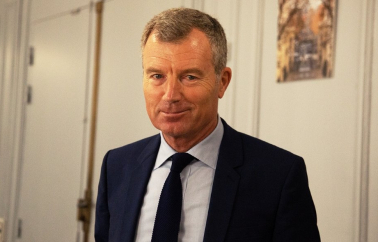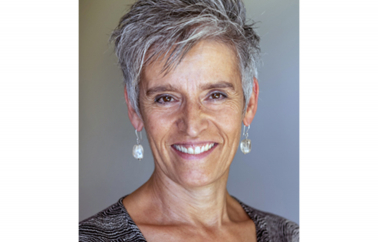
Reception of Ukrainian refugees in Switzerland - by Anne Marion Freiss, Prefect of the West Lausanne district, Switzerland
Working group D
Reception of Ukrainian refugees (housing, right to work, schooling, health, return to Ukraine)
Preamble
As a preliminary point, it is up to me to recall that Switzerland being a federalist state, issues related to the reception of Ukrainian refugees have been delegated to the 26 cantons. In the canton of Vaud, the government has delegated this mission to the Vaud Establishment for the Reception of Migrants (EVAM). The prefects have no particular mission, except to liaise on a case-by-case basis between the municipality and EVAM with a view to opening a temporary location.
I will be able to provide you with the following information to answer the questions asked.
1. Governance
1. Specific systems, structures and tools put in place by the States
Establishment of a “Ukraine Reception Task Force” at cantonal level (TF). This responds to a delegation chaired by the DEIEIP with the participation of the DJES and DSAS, the DEF (an important element) is represented by its SG (document 230112-OrgTF clarifies the roles and responsibilities and the participants). This Task Force has evolved over time: At the beginning of the Ukrainian crisis, the focus was only on Ukrainians. With the increase in the flow of migrants from other countries, the Council of State has decided to extend powers to “large-scale forced migration phenomena”. The TF has been working on this broader theme since November 2022. No activation of the ORCA plan, but close relations have been forged between the EVAM and the EMCC, with contingency planning (in the admittedly unlikely case of a new influx are being worked on).
2. Statistical and monitoring tools
The Task Force publishes a weekly bulletin, this bulletin is the main monitoring tool.
2. Housing
1. Support over the short term (emergency), medium (temporary) and longer term (permanent)
2. Activation of public housing measures
3. Stimulation and supervision of reception by the citizen (private)
4. Finding and setting up collective accommodation
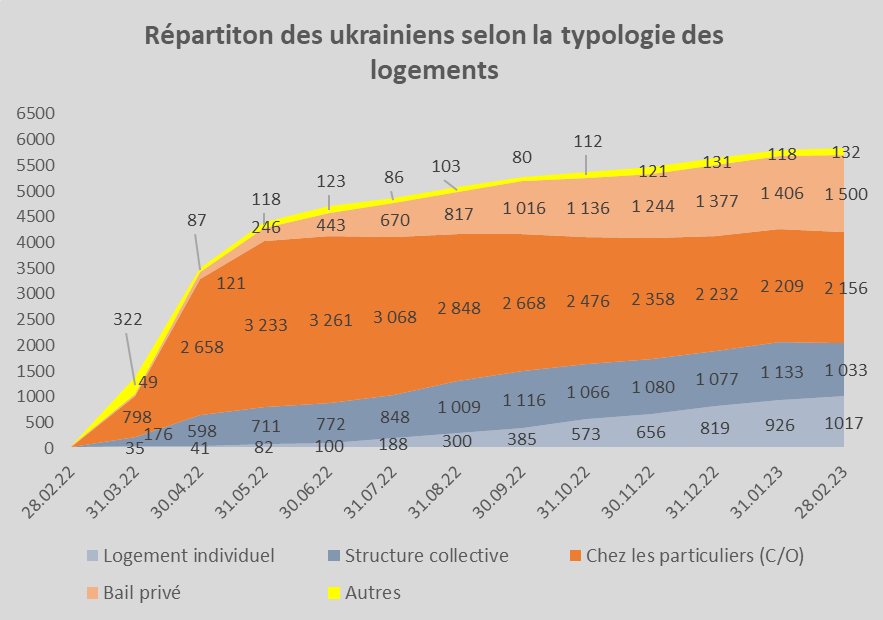
For questions 1, 2,3: The question of housing is obviously the priority. There are 4 types of accommodation:
- Collective structure EVAM (1033 Ukrainians)
- Hostels are collective accommodation structures. Historically, the EVAM has 11 in the canton, for 1216 places. 20 additional homes were opened during the crisis (for 1,508 places). - Medium/long term solutions
- Two civil protection shelters (186 places) have also been opened to make up for the lack of space (single men, maximum length of stay of 6 months). We risk opening more during 2023. - Short-term solution, emergency/temp
- A temporary collective accommodation structure was also opened in Beaulieu (300 places). It will be replaced in April by a smaller structure (end of lease). This structure serves as an arrival hall and welcomes people on the very short term (a few days/weeks max). This is a transitional solution for new arrivals in the canton, the time to find places in more permanent structures (foyers/apartments). It should be noted that the Civil Protection was mobilized to help open two structures last summer. The EVAM has since regained control of these sites (the PCi remains an important partner and could be mobilized again if our means were to run out) - short-term, emergency solution.
- Individual housing EVAM (1033 Ukrainians)
These are apartments made available to migrants by the EVAM (these are either buildings owned by the EVAM or rentals taken out in the name of the EVAM). - Long-term solutions (sustainable)
- Private lease (1500 Ukrainians)
This is the simplest case for EVAM, the migrant finds accommodation (with or without our help) and signs a lease contract in his name (EVAM pays all or part of the rent, assistance for moving / furniture, RC and ECA insurance, deposit). - Long term solutions
- Among individuals (c/o): 2156 Ukrainians
Host a migrant, 1 village 1 family: ~900 Ukrainians
_This is a program where people can make accommodation (or part of it) available to migrants. EVAM puts migrants in contact with landlords, provides social support and pays financial compensation. The minimum commitment (time) is 6 months. After the contract is either
_The One Village One Family project works on the same principle, but is aimed at municipalities that would like to get involved.
_This model is losing momentum (end of the momentum of solidarity, hosting someone at home is not easy), but we see that the majority of people who go through this program then find a private lease (the host families work in this direction). Consequently, few beneficiaries request housing from EVAM after going through this arrangement.
- Among individuals: ~ 1300 Ukrainians
In the case where a migrant lives with acquaintances, friends, family. EVAM is not part of the accommodation solution.
On the other hand, depending on the migrant's situation, a lump sum may be paid.
It is important to note that the outpouring of solidarity has been impressive, the accommodation of Ukrainians in private homes represents as many places (2200) as the solutions offered by the EVAM (homes/apartments = 2000). It's amazing !
4. The search for collective structures is a permanent challenge. Prospecting has been a daily job since the beginning of this influx.
3. Procedures, administration and information
5. Registration, identification and domiciliation procedures for refugees under temporary protection. Fact sheet “Protection status S”. Federal Jurisdiction Proceedings.
➢ Protection status S allows the persons concerned to obtain rapid and unbureaucratic protection in Switzerland, without going through an ordinary asylum procedure.
➢ Beneficiaries of this status obtain an S permit (art. 45 OA 1). Its validity is limited to one year and can be extended. After five years at the earliest, the persons in need of protection receive a residence permit B which ends when the provisional protection is lifted. (art. 74 LAsi).
➢ Protection status S confers a right of residence, allows its beneficiary to carry out family reunification and gives him, in the same way as persons admitted on a provisional basis, a right to accommodation, assistance and to medical care. Children can go to school.
➢ Beneficiaries of S status can travel abroad and then return to Switzerland without having to request an authorization (art. 9, al. 8, P-ODV)
➢ Beneficiaries of S status are entitled to social assistance and can immediately carry out a gainful activity subject to authorization (including self-employed).
➢ The Confederation pays the cantons a global contribution for each beneficiary of S status who receives social assistance (art. 22 OA 2). This package has three parts: participation in housing costs, participation in expenses related to social assistance and supervision and the third aix health insurance premiums.
➢ Protection status S is a return-oriented status. The Confederation creates the conditions conducive to the return of those concerned (cf. art. 67 LAsi).
➢ Protection status S was created as part of the total revision of the asylum law in 1998 when the wars in Yugoslavia led to an exodus of the population.
6. Use of protection status S
Protection status S grants protection on the basis of simple membership of a particular group (see section 2 “Definition of the group of persons to be protected”). Membership of the defined group is established within the framework of a simplified procedure, which includes certain stages of the ordinary asylum procedure (e.g. registration of the application, security check, summary hearing, examination of membership of the group of persons to be protected). If, after five years, the Federal Council has still not lifted the temporary protection, the person to be protected receives from the canton to which he has been allocated a residence permit B which ends when the protection is lifted (art. 74 There if).
7. Information for refugees and citizens (call centres, FAQs, etc.)
Ukraine webpage(link) + Vaud Hotline (in French, English, German, Ukrainian and Russian)
4. Social and health
8. Procedures for granting and activating social, financial and food aid
The procedure is detailed: Obtaining protection status S from a CFA (Federal Admissions Centre) and allocation to the canton of Vaud - going to EVAM (without an appointment) - opening of assistance, insurance, accommodation .
Note: going to EVAM is not compulsory for those who do not want assistance, in which case they must nevertheless join a health insurance fund.
9. Medical and psychosocial devices
If the person is accommodated by the EVAM: a team from the migrant care unit makes contact for an assessment (with an interpreter). A health unit is present at the Beaulieu airlock and in some homes. - the idea is to see all the comers.
Outside EVAM: with certificate of coverage (or health insurance card) - possibility of going to the hospital, to the doctor or to the pharmacy (no systematic visit).
10. Integration path and access to interpreting services
The integration process begins with learning French (in the French-speaking cantons). An evaluation questionnaire is sent to all S permit holders who are not of compulsory school age. A proposal for support is then made to them.
11. Support for vulnerable people (disabilities, minors, families, etc.)
No specific approach. These cases are obviously treated with very special attention (in the same way as vulnerable people from other origins).
12. Access to socio-cultural activities
It depends a lot on the individual situation of each (individual accommodation, with acquaintances, program to accommodate a migrant, home, etc.). Within the framework of the hostels, the EVAM encourages the presence and collaborations with local associations for the aid of migrants. It is not uncommon for citizens' associations to form to spend time with our beneficiaries (but not systematically).
5. Transportation
13. Access to transports
Beneficiaries of EVAM receive a mobilis subscription for the areas between their accommodation and Lausanne (mobility to Lausanne is important to have access to the headquarters of EVAM, SPOP, various administrations and often integration measures, such as French courses provided by EVAM).
14. Implementation of mobility devices
In addition to the subscription, the EVAM supports an integration program with the Maison du Vélo in Lausanne. Through this, migrants can buy a bicycle at low cost.
6. Employment, training and education
15. Problems of schooling and access to schools
This is indeed a difficult problem, especially in the municipalities where the EVAM opens collective accommodation for families (this generates a large number of children to be educated in a short time). This problem was less visible at the start of the crisis, with slow arrivals spread across the country (often in private leases, with individuals, etc.). The concentration of many children in the same place is problematic for municipalities which have to find space for schools. The DGEO is aware of and is working on this issue.
16. Access to the labor market, employment
The S permit gives access to the labor market. This access is subject to authorization.
17 Professional integration and training
Young S permit holders have access to apprenticeship. In addition, residence permits for young apprentices will be renewed to enable them to complete their training.
7. Conflict prevention and management
18. Difficulties of integration and community life
Nothing to report.
19. Situation of communities and Travelers
Traveler communities from Ukraine present the same challenges as Traveler communities from other countries. The SEM does not take into account membership of this community in the allocation of cantons (the request for protection S is linked to Ukrainian nationality and not to membership of one community or the other). Similarly, the EVAM does not keep a register of Roma people and is not in a position to provide detailed information on this subject. One of the problems often cited in connection with this community is the question of interpreting. Indeed, if the offer in the Ukrainian language seems adapted, this language is not mastered by all the communities of Travelers, resulting in more difficult access to essential services.
20. Returns to Ukraine
The SEM has allocated 7,360 people with S status to the canton of Vaud. Today, the EVAM has 6,142 Ukrainian beneficiaries. The difference (1218) represents the returns and the people assigned to the canton who did not request assistance from the EVAM. It is difficult to have a more precise statistic.
April 6, 2023/Anne Marion Freiss

